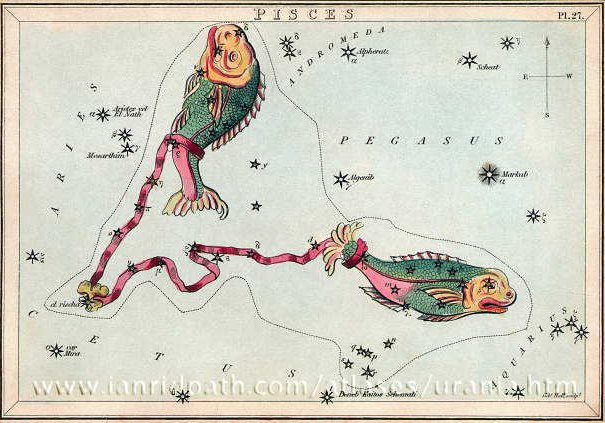1. Next star in the alphabetical order is Alrisha and this star has been mentioned earlier - see at the end of the Saturn chapter.
A location of Alrisha at Gb7-26 is, though, not what the numbers point at. Instead Alrisha evidently should come one step later. A quick search in Wikipedia - where the right ascension numbers are updated compared to the figures in my book - results in the value 02h 02m 02.80s for Alrisha. We can then use the data for Achernar:
Alrisha is rising 24.3m after Achernar, which I have placed at a position 24.3 days after equinox. 243 is a number we have encountered several times earlier, e.g. at Rau Hei:
Maybe 243 signifies that it is time for the birth of a new year. 240 = ⅔ * 360 and 24 right ascension hours can be converted to the days of the year by counting 15 days for each hour. The daily cycle of Sun (24) is something else than the cycle of the year (which presumably was counted by Moon). 16h at Vrischika (at the beginning of Scorpio) translates to day number 240 (counted from equinox). 243 / ⅔ = 364½ and 365¼ / 1½ = 243½. Counting with π instead, we have earlier noted how 314 * 1½ = 471, i.e. 314 / ⅔ = 471. 1½ is equal to ⅔ inverted. I remember having read somewhere that the Chinese had a cycle covering 1½ years, and we know that ⅔ of Gilgamesh was God: ... Gilgamesh is claimed to have been one of the earliest kings of Uruk (or Erech). The circumstances of his fabled birth make him two-thirds god and one-third man, which makes him - in the sexagesimal system of Mesopotamia - two-thirds of 60 (= Anu) = 40, the number which characterized Enki-Ea, whence the latter's denomination of 'Shanabi (= ⅔, i.e., of 60) and Nimin (Sumerian = 40)' ... 24 right ascension minutes corresponds to 6 days (and probably also to 6 glyphs), given that we count with a year which is 365.25 days long:
In view of the uncertain and not very exact right ascension numbers used in my book we should instead rely on modern data to calculate the distances between the stars. |
|||||||||||||||||||||||||||||||||||||||||||||||||||||||||||||||||||||||||||||||||





